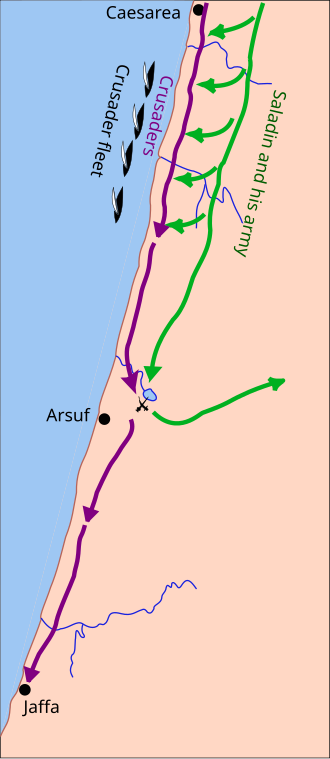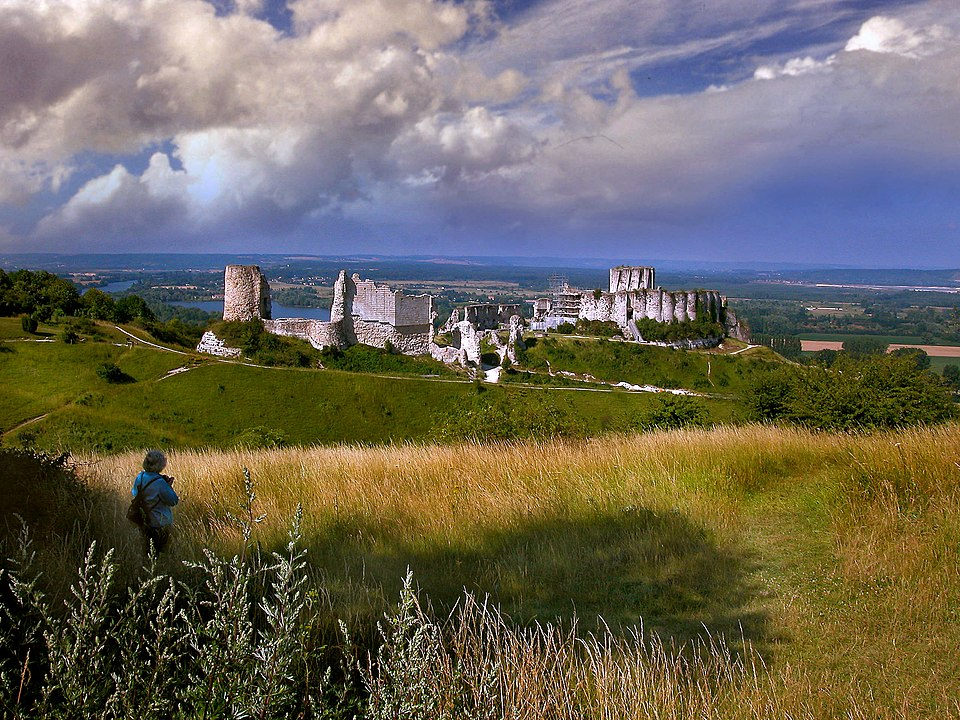IB Syllabus focus:
'The development and components of Richard's reputation as "the Lionheart," exploring the blend of myth and reality.
Specific campaigns and battles that contributed to this reputation, highlighting his personal acts of bravery and strategic acumen.
The impact of this reputation on his relationships with allies, enemies, and subjects.'
Richard I, known fondly as Richard the Lionheart, has been etched into history not just for his reign, but for his exemplary military tactics and a reputation that affected the political landscape of his time.
The Making of "The Lionheart"
Origins of the Title:
Richard’s moniker, "Cœur de Lion" or "Lionheart," became synonymous with courage and unparalleled bravery on the battlefield.
This title was more than just a nickname; it became a symbol of his strength and a testament to his leadership, especially during challenging campaigns.
Myth vs. Reality:
Myths: Over time, Richard’s real-life exploits were intertwined with the larger-than-life tales told by troubadours, making him an almost legendary figure. His involvement in the Third Crusade was particularly subject to romanticised retellings, amplifying his heroism.
Reality: While Richard was undoubtedly one of the most skilled warriors of his time, often engaging in frontline battles, it's essential to differentiate between his genuine military feats and the embellished tales. He faced multiple challenges, especially during his campaigns against France, which were not always successful.
Noteworthy Campaigns and Battles
Battle of Arsuf (1191):
This battle was a turning point in the Third Crusade, marking a substantial victory against the Muslim forces led by Saladin.
Richard's military genius was evident as he instructed his troops to maintain formation despite constant harassment by Saladin's archers. This discipline eventually allowed the Christian forces to launch a surprise charge, breaking Muslim lines.
Richard, true to his reputation, was at the forefront of the charge, inspiring his troops and inflicting heavy losses on the enemy.

Map of the Battle of Arsuf (1191) showing the Crusader marching order along the coast and the decisive mounted charge that broke Saladin’s line. The schematic clarifies how maintaining formation enabled a controlled counter-attack rather than a disorderly pursuit. Source
Siege of Acre (1191):
A significant siege that lasted nearly two years, resulting in a crucial win for the Christian forces.
Richard's contributions to the siege were multi-faceted. His strategic genius ensured the blockade was impenetrable, and his very presence boosted the morale of the besieging army.
Post-victory, Richard faced controversy for his decision regarding the Muslim captives, further cementing his complex historical legacy.
Campaigns in France:
Richard's battles in France were largely defensive, aiming to protect his French territories from Philip II of France.
One of his most remarkable achievements during these campaigns was the construction of Château Gaillard. This fortress, built with Richard's oversight, became a symbol of Angevin strength in Normandy. Its impressive defences and strategic location made it a formidable obstacle for French forces.
Throughout these French campaigns, Richard's tactical acumen was evident, often forcing Philip II to rethink and adjust his strategies.

Château Gaillard dominates a bend of the Seine above Les Andelys, a position chosen by Richard I to control river movement and deter Capetian advances. The image highlights the multi-bailey layout on a commanding spur, underscoring its symbolic and strategic value in the Angevin–Capetian struggle. Source
Impact of Richard's Reputation
Allies:
For many European nobles and knights, allying with Richard was a coveted honour. His military successes made him a magnet for those seeking glory and victory.
During the Third Crusade, despite differing objectives and frequent disagreements, European leaders like King Philip II of France and Emperor Frederick I recognised Richard's military superiority, often deferring to his strategies.
Enemies:
Richard's formidable reputation was a double-edged sword. While it instilled fear and respect among adversaries, making them wary of direct confrontations, it also made him a prime target for assassination and capture.
Leaders like Saladin had to constantly adapt their tactics. The respect was mutual; despite being adversaries, Richard and Saladin often exchanged gifts and messages, a testament to the chivalry of the age.
Subjects:
In England, Richard's reputation was multifaceted. On one hand, his subjects were proud of their king's international stature, but on the other, they felt the economic strain of financing his military endeavours.
Richard's extended absences from the kingdom, largely due to his campaigns, led to internal unrest and discontent. However, the legend of the Lionheart – the warrior king – ensured that no internal rebellion during his reign ever reached a threatening magnitude.
Delving deeper into Richard the Lionheart's military exploits and the reputation that surrounded him, one can see a nuanced blend of reality and myth. His genuine accomplishments on the battlefield were sometimes overshadowed by the tales of his heroism, but these stories, whether real or exaggerated, shaped the medieval perception of leadership and valour. For students of history, the Lionheart remains an enduring symbol of the complex interplay between power, reputation, and the narratives that history weaves.
FAQ
Indeed, after the successful Siege of Acre, Richard made a controversial decision that remains a topic of debate among historians. He ordered the execution of around 2,500 Muslim soldiers and civilians who were taken prisoner. Richard's rationale was that holding onto these prisoners posed a logistical challenge and they could not be ransomed or exchanged due to stalled negotiations with Saladin. However, this act was viewed by many contemporaries, especially in the Muslim world, as a brutal and unnecessary massacre. The decision further complicated Richard's relationship with Saladin and cast a shadow on an otherwise significant Christian victory.
Richard's relationship with his younger brother, John, was fraught with tension and had implications for his reputation. While Richard was away on the Crusades, he appointed regents to rule in his stead, but John frequently conspired against Richard's interests, aiming to consolidate power for himself. These internal family conflicts painted Richard in a complicated light; on one hand, he was the crusading hero, while on the other, he seemed unable to control his own family. John's actions, particularly his alliances with some of Richard's enemies, affected Richard's image domestically, with some viewing him as a king who was more interested in foreign conquests than securing stability at home.
Château Gaillard, situated in Normandy, is a testament to Richard's forward-thinking military strategies. Built between 1196 and 1198, its design incorporated advanced defensive features of the time. The fortress consisted of several layers of defences, including a strong outer wall, a fortified inner keep, and a series of ditches and drawbridges. The castle's strategic location atop a limestone cliff overlooking the River Seine made it difficult to besiege. Its construction not only served as a deterrent against Philip II's ambitions in Normandy but also showcased Richard's understanding of the importance of fortifications in medieval warfare, consolidating his territories and providing a vantage point for overseeing surrounding lands.
Troubadours, the poets and lyricists of the medieval era, played a pivotal role in popularising the image of Richard as an almost supernatural warrior. These entertainers often dramatised events to appeal to their audiences. For instance, they would describe Richard's individual combats as him fighting against insurmountable odds, single-handedly defeating multiple adversaries. In their tales, not only would Richard always emerge victorious, but he'd often do so with an air of chivalric romance, sometimes attributing divine intervention or favour to his successes. While these tales were certainly entertaining, they often blurred the lines between reality and fiction, leading to the legendary status of Richard the Lionheart.
While Richard's military prowess is well-documented, opinions about his skills as an administrator and ruler were divided among his contemporaries. Many admired him for his bravery, yet criticised him for neglecting England in favour of his French territories and Crusading efforts. Additionally, his decision to ransom himself, which placed a heavy economic burden on his subjects, was met with discontent. Some viewed him as a neglectful king, frequently absent and leaving the management of the kingdom to others. However, despite these criticisms, his charismatic presence and legendary status often overshadowed his administrative shortcomings in the eyes of many.
Practice Questions
Richard the Lionheart's moniker aptly captured his valiant spirit and formidable prowess in battle, with historical records affirming his frontline participation and strategic genius, especially in battles such as Arsuf and the Siege of Acre. However, the romanticised tales by troubadours and contemporary chronicles often magnified his deeds, portraying him as an idealised medieval warrior. While his bravery was indisputable, the intricate blending of these embellished accounts with his genuine feats creates a nuanced historical understanding, suggesting that Richard's reputation as "the Lionheart" was a fusion of both myth and verifiable reality.
Richard's formidable reputation significantly shaped his interactions on the political stage. Allies, such as European nobles, sought alignment with him, recognising his military superiority and hoping to share in his triumphs, evident during the Third Crusade. Adversaries like Saladin approached him with a mix of respect and caution, continually adapting their strategies, yet often partaking in exchanges reflecting the chivalry of the era. Within England, subjects held a mixed view; while they felt pride in their king's renowned status, they also grappled with the economic strains of financing his ventures, revealing a multifaceted impact of his reputation on his domestic and international relationships.

